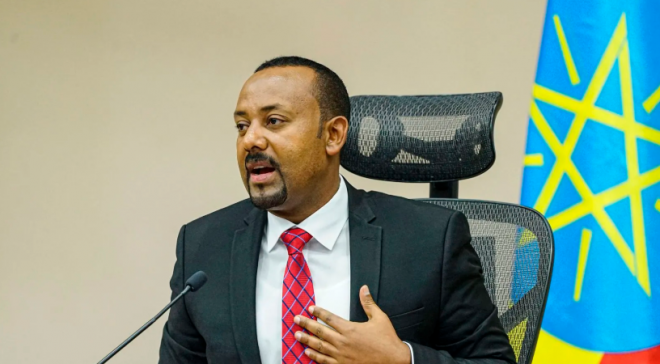Torture, detentions and killings rife in western Tigray, report claims
Government-aligned forces in western Tigray have systematically detained thousands of ethnic Tigrayan people, while torturing and killing many in a campaign of violence, according to a report by two major rights groups that further reveals the scale of abuses in war-hit Ethiopia.
In the past few weeks, the report says, Tigrayans in the Amhara region identified by local police and ethnic militia forces called Fano have been routinely rounded up in house-to-house raids. Adults and teenagers over 15 have been detained in overcrowded prisons where scores are tortured and face starvation, it adds.
Women and younger children have been expelled from the three western Tigrayan towns targeted, while many have been killed and tortured, according to witnesses and survivors interviewed in the joint report by Amnesty International and Human Rights Watch.
The atrocities reported in the towns of Humera, Adebai and Rawyan shine additional light on widespread abuses and alleged crimes against humanity reported in the region since war broke out in November 2020 when Prime Minister Abiy Ahmed launched a military offensive against the Tigray People’s Liberation Front, which had previously ruled Ethiopia for 28 years.
The nature of the atrocities has only gradually emerged this year, partly a result of a communications blackout in Tigray by Ethiopia’s government as well as widely condemned restrictions on aid agencies, rights groups and observers.
In November and December, interviews with 25 witnesses, survivors and relatives of victims revealed widespread abuses by Amhara militias and regional security forces against Tigrayan civilians in western Tigray, which has been occupied by Amhara authorities and where some of the most horrific atrocities in the war have occurred.
Witnesses reported trucks filled with Tigrayans during roundups, in part corroborated by satellite imagery captured by researchers from Amnesty and HRW.
In some incidents, witnesses said residents who fled were gunned down or attacked by operatives wielding machetes and axes.
“They started shooting whoever was in a range running,” said a 34-year-old farmer from Adebai, who fled to a nearby field after an attack by Fano members. “When the people tried to escape … [the Fano] attacked them with machetes and axes so no one could escape,” he said, describing seeing several dead bodies after his escape. “Everywhere you turned, there would be five, 10 bodies,” he said.
Many of the bodies remained unburied, so that “the whole town smelled and was filled with dead bodies”, said another man who escaped the attack.
Other witnesses reported roundups in the town of Rawyan on 20 November. One man who was abducted from a school told researchers that forces rounded up all the Tigrayans at the school and put them on waiting trucks.
“Militia were beating the youth, 17- and 18-year-olds, searching for money and collecting their possessions. The [administrators] gave instructions – who can be released, and who can stay,” he said.
Atrocities have been committed by all parties in the conflict, including Tigrayan-led forces since fighting began.
The most recent abuses appear to have taken place around the same time that Tigrayan-led forces secured a number of battlefield victories, prompting Prime Minister Abiy, who won the Nobel peace prize in 2019, to join the conflict himself.
Fears in recent weeks of a rebel march on Addis Ababa prompted countries including the UK to urge their citizens to leave Ethiopia as soon as possible, although Abiy’s government has said the city is secure.
Regional Amhara security forces, ethnic militia groups such as Fano, and even troops from neighbouring Eritrea have fought alongside Ethiopia’s army. The conflict has blown open historical regional and ethnic faultlines in Africa’s second-most populous country.
The government response has ranged from denials to coy admissions of the involvement of armed groups. Authorities initially denied Eritrean forces were in Ethiopia.
The report also highlights the fate of thousands of Tigrayans estimated to be held in Amhara-run prisons and detention centres.
A labourer arrested in July and held in a prison controlled by Amhara regional police escaped in mid-November and described being kept in a 3-by-4-metre room with up to 200 people.
He described routine torture by Fanos against groups of detainees, by beating their hands, heads, chests and genitals using sticks or the butt or muzzle of a rifle. “They used electric wires and for the ages from 12 to 30, they hit us on the soles of our feet,” he said. The others that are older, they lay them down on their stomachs and hit them from their necks to their feet.”
Earlier this month, the United Nations Office for the Coordination of Humanitarian Affairs said 1.2 million people had been displaced from western Tigray since the beginning of the conflict, with more than 10,000 Tigrayans displaced between 25 November and 1 December.
The fighting has displaced more than 2 million people across Tigray and driven hundreds of thousands into famine-like conditions.







